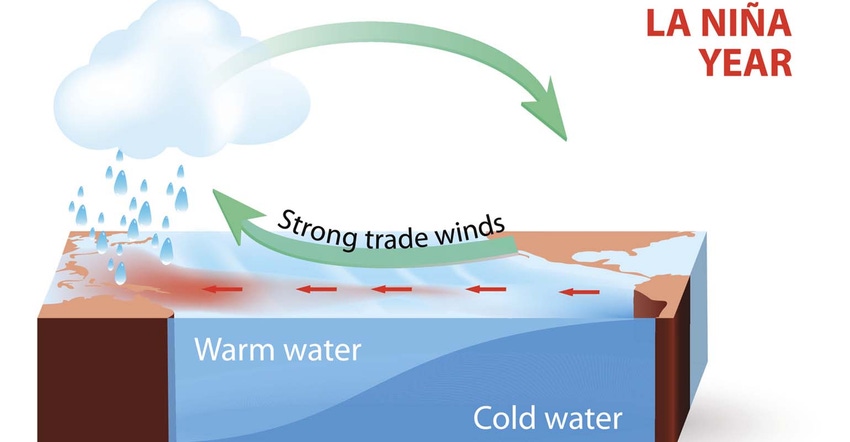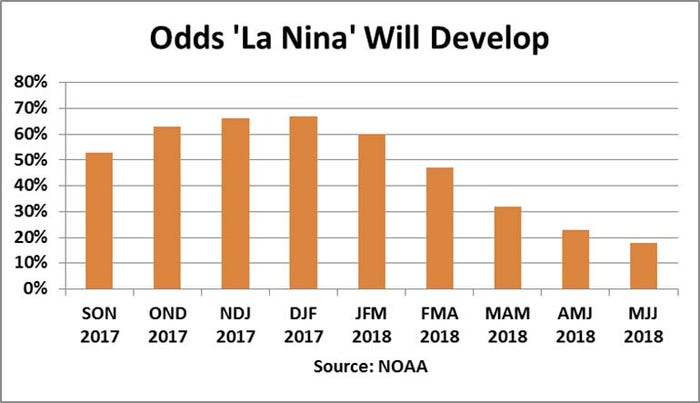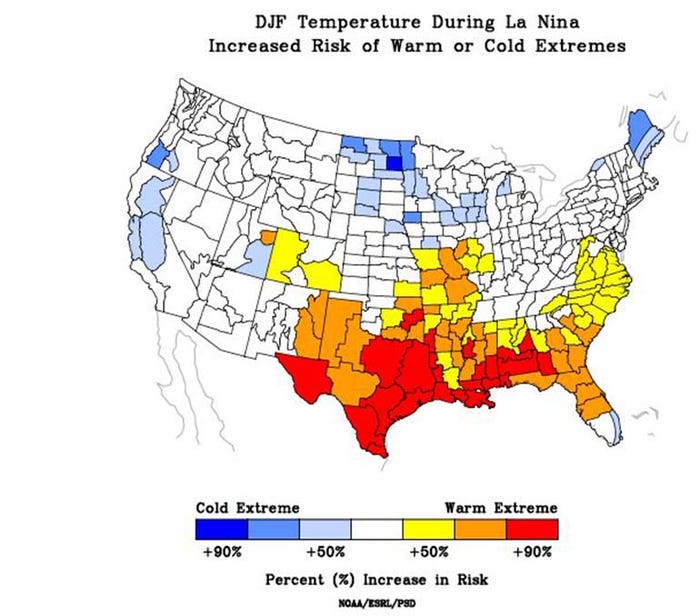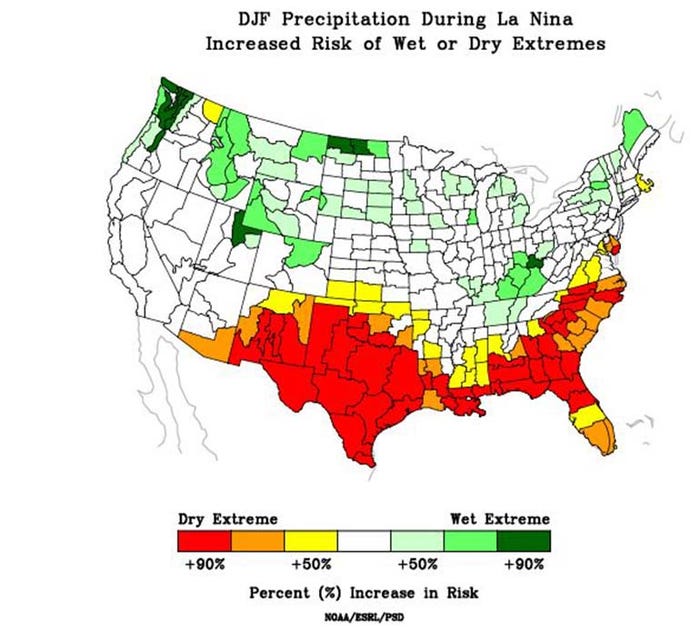
The El Niño-Southern Oscillation (ENSO) cycle is one of several weather phenomena that can have a dramatic influence on U.S. weather. Currently, equatorial sea surface temperatures (SST) are near-normal, causing ENSO-neutral conditions. But that could change this winter, according to the latest NOAA analysis.
NOAA now projects that La Niña conditions could return sometime this winter. The odds of this happening overall are around 55% to 65%, with the greatest chance occurring sometime between December 2017 and February 2018.

By May/June/July of 2018, the odds favor neutral conditions once more (59%), with a small but growing chance for El Niño conditions during this time (23%).
This trend has been building for several weeks now. Slight SST heat anomalies between 0.2 and 0.4 °C were persistent through most of the summer. But starting in late July and early August, cooler anomalies have slowly increased to levels of nearly -1.0 °C. To be considered a “full-fledged” La Niña, anomalous SSTs have to remain at -0.5 °C for five consecutive, overlapping three-month periods.
What does that mean for U.S. weather? Several trends are possible.
First, the southeastern and southwestern U.S. tend to experience drier-than-normal and warmer-than-normal conditions during La Niña winters. Meantime, in the northern Midwest, northern Rockies and Pacific Northwest, La Niña conditions can deliver more precipitation than normal.
Here, NOAA has plotted out where temperature and precipitation extremes can occur in the U.S. when La Niña conditions are present between December and February:


For more information on El Niño and La Niña patterns, visit https://oceanservice.noaa.gov/facts/ninonina.html.
About the Author(s)
You May Also Like






